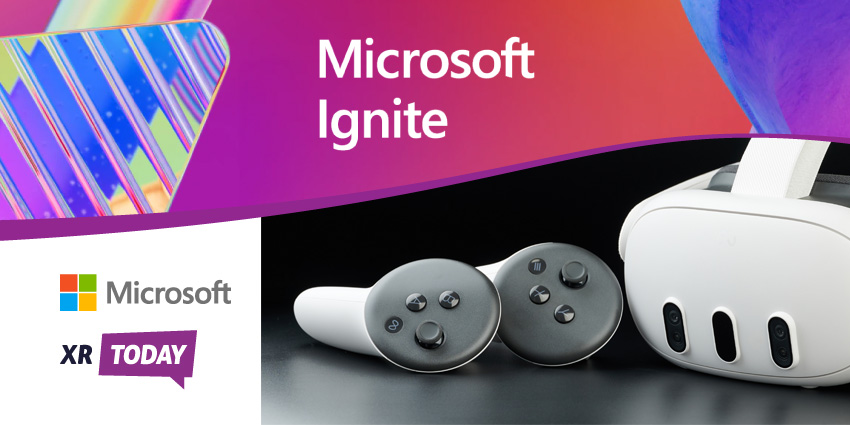This week at Ignite 2024, Microsoft announced that it would launch a mixed reality (MR) version of its Windows portfolio for Meta Quest headsets. The news comes as the firm drops support for HoloLens, seemingly highlighting the firm’s shift towards becoming an immersive software provider rather than a hardware one.
The recent Ignite 2024 news highlights how the soon-debuting Windows Mixed Reality for Quest service will bring the full capabilities of Microsoft’s trusted digital suite to Meta’s headset portfolio, including the Quest 3 and 3S.
Microsoft notes that the immersive Windows service will introduce enhanced productivity and collaboration opportunities to Quest users, which may, in turn, increase the usability of Meta’s MR headset portfolio in professional settings. Notably, Meta is also boosting the presence of Quest devices in serious teamwork settings with the recent launch of targeted solutions such as the Meta Quest for Education package.
The Windows Mixed Reality for Quest solution aims to create a virtual collaboration and productivity suite that supports virtual meetings, working in shared spaces, and in-person collaboration over digital content via high-quality MR visualisations.
Windows Mixed Reality for Quest will debut in December 2024 as a preview service, just a month before Microsoft begins shutting down HoloLens support.
Will Microsoft commit to XR Software?
The news comes as Microsoft doubles down on providing hardware-agnostic XR productivity apps. Recently, Microsoft entered a long-term partnership with RealWear to distribute Power Apps to Realwear’s lineup of smart glasses for frontline workers.
The latest Ignite news shows that Microsoft is still very much dedicated to XR by providing tools to fuel the future of work. While the firm’s XR hardware ambitions may have disappeared, Microsoft is poised to offer immersive solutions based on its broad Windows, Azure, and CoPilot portfolio.
Microsoft is also very much well-positioned in the emerging enterprise technology space from a back-end infrastructure perspective. By leveraging this, they can provide an enhanced experience for enterprises, potentially advancing business workflows to the next level.
HoloLens Discontinued
As Microsoft debuts immersive suites for hardware vendors like Meta and Realwear, Microsoft’s HoloLens and Mixed Reality partners are being offered “last time to buy” incentives for the HoloLens 2 device. Additionally, the first-generation HoloLens devices are set to receive final updates on December 10th, and Microsoft plans to continue supporting the HoloLens 2 device with updates for security and significant functionalities until December 31, 2027.
Following the official last-time-to-buy announcement, Microsoft released the final major feature update for the HoloLens 2 before its discontinuation. This update includes new system text size settings that allow users to adjust the size of the start menu UI, with options to scale text up to 200%. The update also allows HoloLens 2 users to skip the eye calibration setup, streamlining the first-time setup process.
Additionally, the update introduces two new applications to the headset. First, WinGet integration enables users to download Microsoft Store apps after the storefront’s retirement. Second, the OneDrive PWA application provides improved cloud-sharing capabilities for HoloLens 2 users.
Alongside these significant updates, bug fixes and security updates are also being implemented for the HoloLens 2. This release demonstrates Microsoft’s commitment to keeping the device secure for business during and after the last time-to-buy period.







